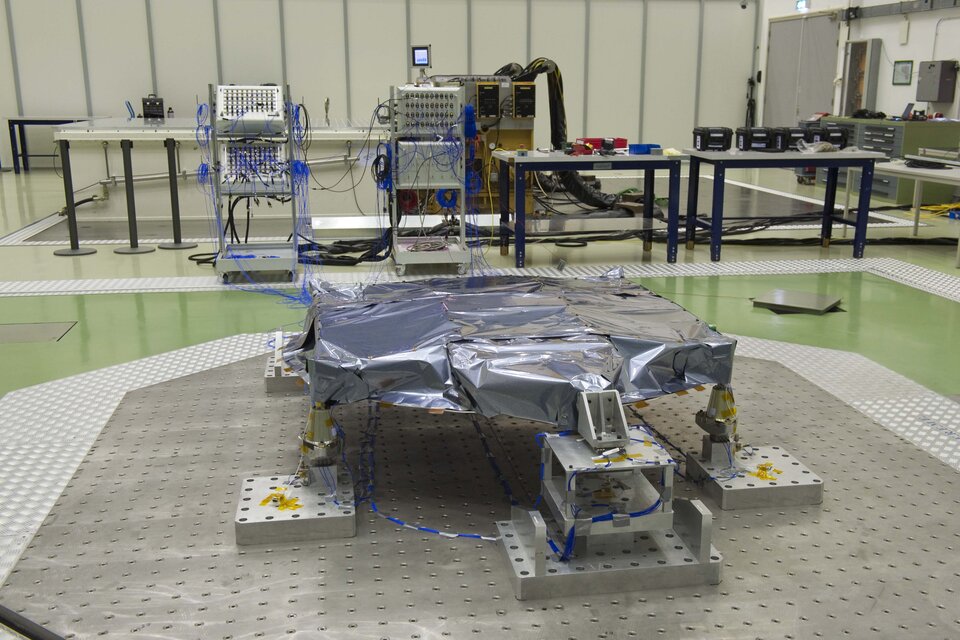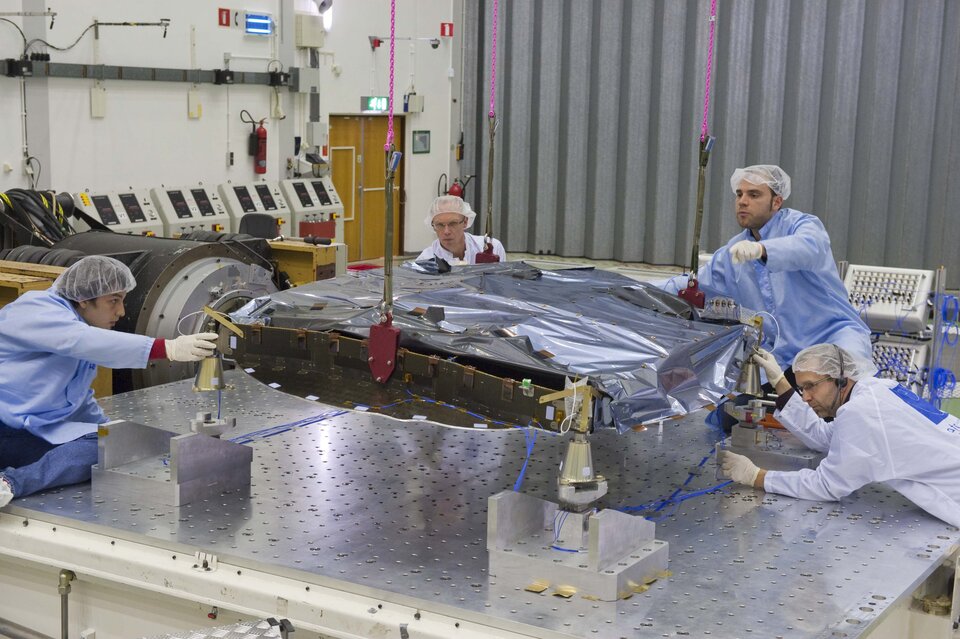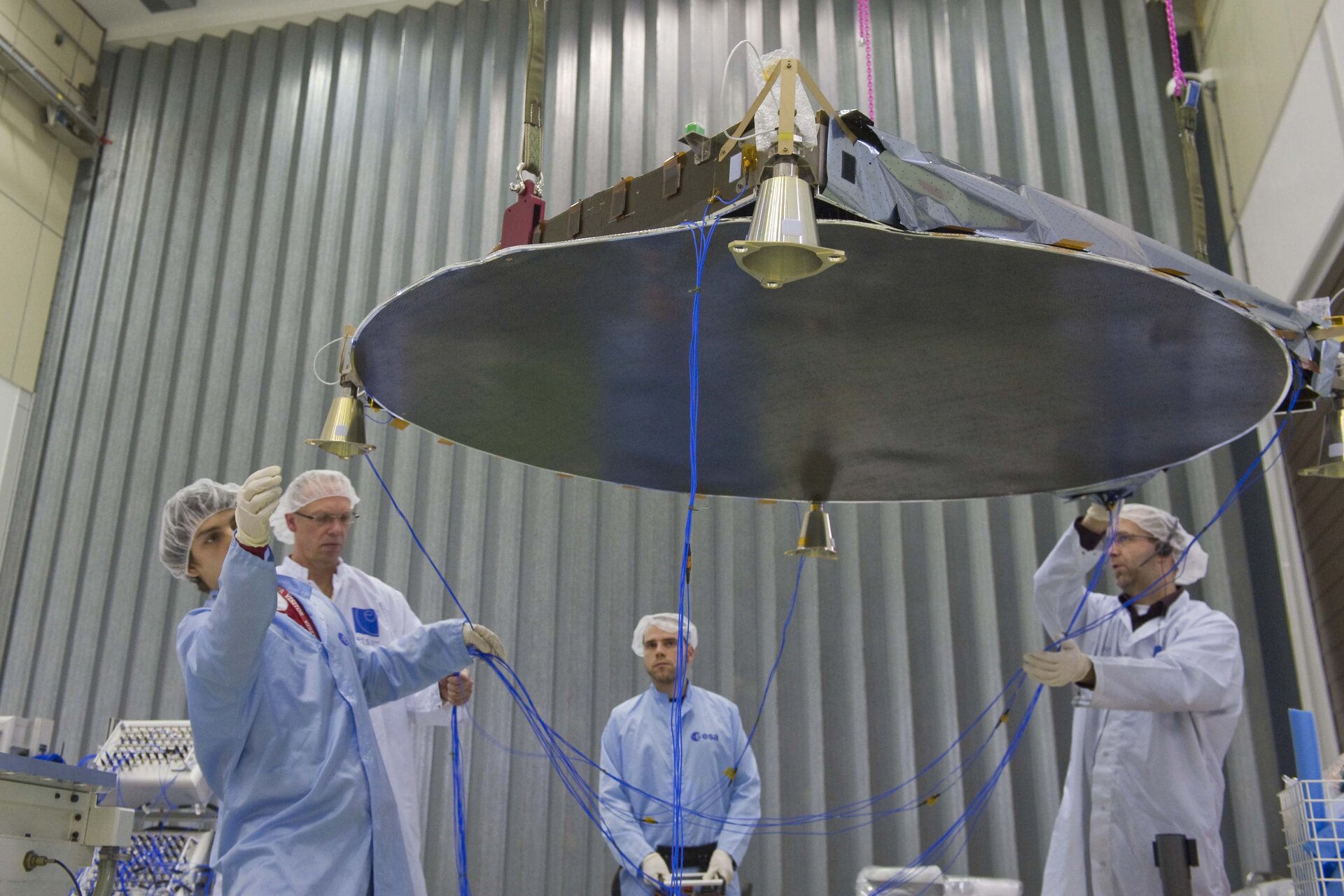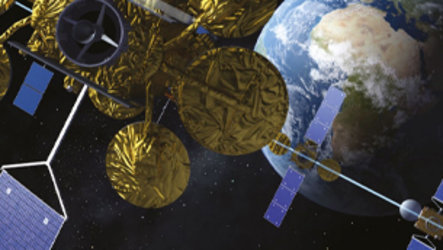Telecom satellite reflector bares itself to space
Two antenna reflectors from Hispasat’s AG1 telecom satellite, built in partnership with ESA, have passed critical acoustic and vibration tests at ESA. One has a unique feature used for the first time on a European commercial satellite.
Stretching 1.8 m across, the reflector is not the usual white. White paint protects the antenna reflector from the extreme temperatures in space, but it distorts radio frequencies. Instead, the bare carbon keeps frequency loss to a minimum.
During the tests at ESA’s ESTEC facility in the Netherlands, the Europe reflector and the 1.2 m Iberia reflector, both built by EADS-CASA Espacio, were subjected to sound pressure levels reaching 145 decibels – the sound of a jet engine – and vibration levels similar to what will be experienced when the satellite is launched into geostationary orbit, almost 36 000 km up.

The Iberia reflector will provide broadband services in Ka-band over Spain, including the Canary Islands and the Portuguese mainland. This dish is shaped to concentrate signals around these areas.
The Europe reflector will provide Ku-band broadband services mainly over Spain, the Canary Islands and Portugal but also all of Western Europe.

The antennas will now continue with a series of radio-frequency tests at EADS–CASA in Spain before being added to the satellite at the end of the year, including tests to determine the bare carbon’s resilience to extreme tempertatures.
Hispasat-AG1 will be launched in 2014 as the first satellite built around Europe’s new Small GEO platform, developed through a public–private partnership between ESA, Spain's Hispasat and Germany’s OHB.

Small GEO is part of the new generation of modular and flexible telecommunications platforms.
ESA is focusing its support on research and development activities through its Advanced Research In Telecommunications Systems (ARTES) programme, while industrial partners finance a substantial part of the development costs.

Hispasat will merge Hispasat-AG1 into its existing fleet of geostationary communications satellites. OHB will be responsible for assembling the satellite, testing it in orbit and early operations.
For more information, see the links in the column to the right.





